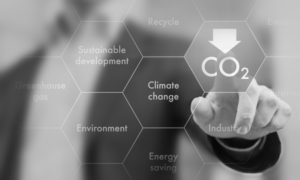 Since 2008, the European Union has been undergoing the decarbonisation process, using forms of restrictive legal and financial regulations. The aim is to achieve a reduction in greenhouse gas emissions, from using fossil fuels, up to 80% by 2050. The way to achieve the aim is based on various scenarios included in the guidelines of the Project “Energy Roadmap 2050” (https://www.roadmap2050.eu/). Meanwhile, the rest of the world plans to increase the production and use of coal, mostly hard coal. Asian countries focus on using coal for their rapid economic development and ensuring a stable supply of relatively cheap energy. China is the world’s largest producer and consumer of coal. Last year, 3.84 billion tons of coal were produced in this country. This is the highest level since 2015. Another big coal and steel market player is growing behind China, India. India plans to produce 1 billion tons of coal per year. The situation is not different in Indonesia and Japan. The Japanese government assumes that in 2030, coal is to become the main product stabilizing the country’s energy system. Since Asian markets in the era of intensified development are not self-sufficient, they also generate increased demand for coal imports. The world’s largest coal exporters will not leave the Asians ?in need? and they are already preparing increased supplies. The USA has the largest coal reserves in the world, although a slight reduction of coal production has started recently. The USA?s production level is still several times higher than the Polish one. The USA can afford it due to the rich resources of shale gas. Russia follows the USA and plans to increase its coal production to 670 million tonnes per year in 2035. Australia maintains a strong export position, where decisions are also made to start production in new fields. The Asian economies need more stable supplies, so a new player, Mongolia, is growing in the market. Until now, all Mongolian exports have been absorbed by the Chinese market. Political frictions Between China and Australia are provoking Mongolia to increase production and exports as well as the development of transport infrastructure (railway lines). Japan is also interested in Mongolian coal, looking for an alternative to Australian supplies.
Since 2008, the European Union has been undergoing the decarbonisation process, using forms of restrictive legal and financial regulations. The aim is to achieve a reduction in greenhouse gas emissions, from using fossil fuels, up to 80% by 2050. The way to achieve the aim is based on various scenarios included in the guidelines of the Project “Energy Roadmap 2050” (https://www.roadmap2050.eu/). Meanwhile, the rest of the world plans to increase the production and use of coal, mostly hard coal. Asian countries focus on using coal for their rapid economic development and ensuring a stable supply of relatively cheap energy. China is the world’s largest producer and consumer of coal. Last year, 3.84 billion tons of coal were produced in this country. This is the highest level since 2015. Another big coal and steel market player is growing behind China, India. India plans to produce 1 billion tons of coal per year. The situation is not different in Indonesia and Japan. The Japanese government assumes that in 2030, coal is to become the main product stabilizing the country’s energy system. Since Asian markets in the era of intensified development are not self-sufficient, they also generate increased demand for coal imports. The world’s largest coal exporters will not leave the Asians ?in need? and they are already preparing increased supplies. The USA has the largest coal reserves in the world, although a slight reduction of coal production has started recently. The USA?s production level is still several times higher than the Polish one. The USA can afford it due to the rich resources of shale gas. Russia follows the USA and plans to increase its coal production to 670 million tonnes per year in 2035. Australia maintains a strong export position, where decisions are also made to start production in new fields. The Asian economies need more stable supplies, so a new player, Mongolia, is growing in the market. Until now, all Mongolian exports have been absorbed by the Chinese market. Political frictions Between China and Australia are provoking Mongolia to increase production and exports as well as the development of transport infrastructure (railway lines). Japan is also interested in Mongolian coal, looking for an alternative to Australian supplies.
It is certain that decarbonisation is not a global process, so what awaits us? Will the EU be left behind? Will Europe be self-sufficient after giving up coal? Will the adopted strategies ensure energy security?
Regardless of the market situation, quality is the determinant of thermal and coking coal trading. Due to high requirements, their quality parameters must be constantly monitored with the use of standardized analytical methods. The Institute for Chemical Processing of Coal has been offering analytical services in the field of coal quality analysis for decades. The Institute’s competencies are developed and updated based on the latest scientific achievements same as active participation in national and international projects and expert panels.
A wide range of physical and chemical analyzes of coking coals are performed at the Analytical Laboratory (Laboratory Manager, Edyta Misztal, M.Sc., Eng., Bartosz Mertas, PhD Eng. bmertas@itpe.pl).
We invite you to cooperate with our specialists!
Author: Małgorzata Wojtaszek-Kalaitzidi
Department of Cokemaking Technologies
mwojtaszek@itpe.pl | tel: 48 32 621 06 20 41.